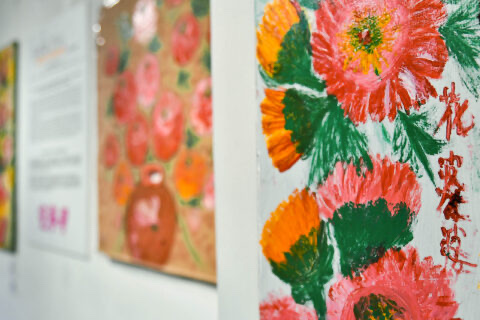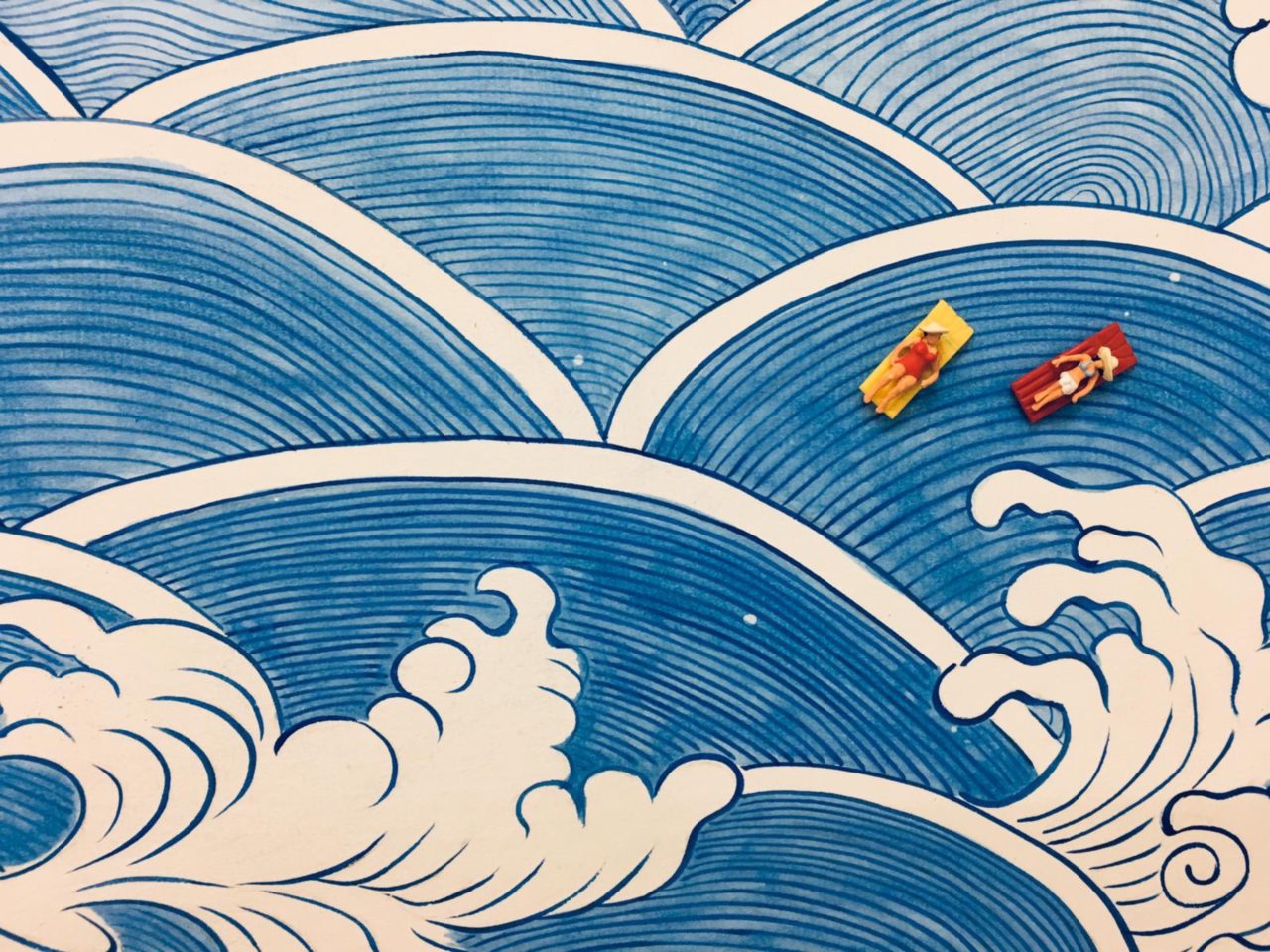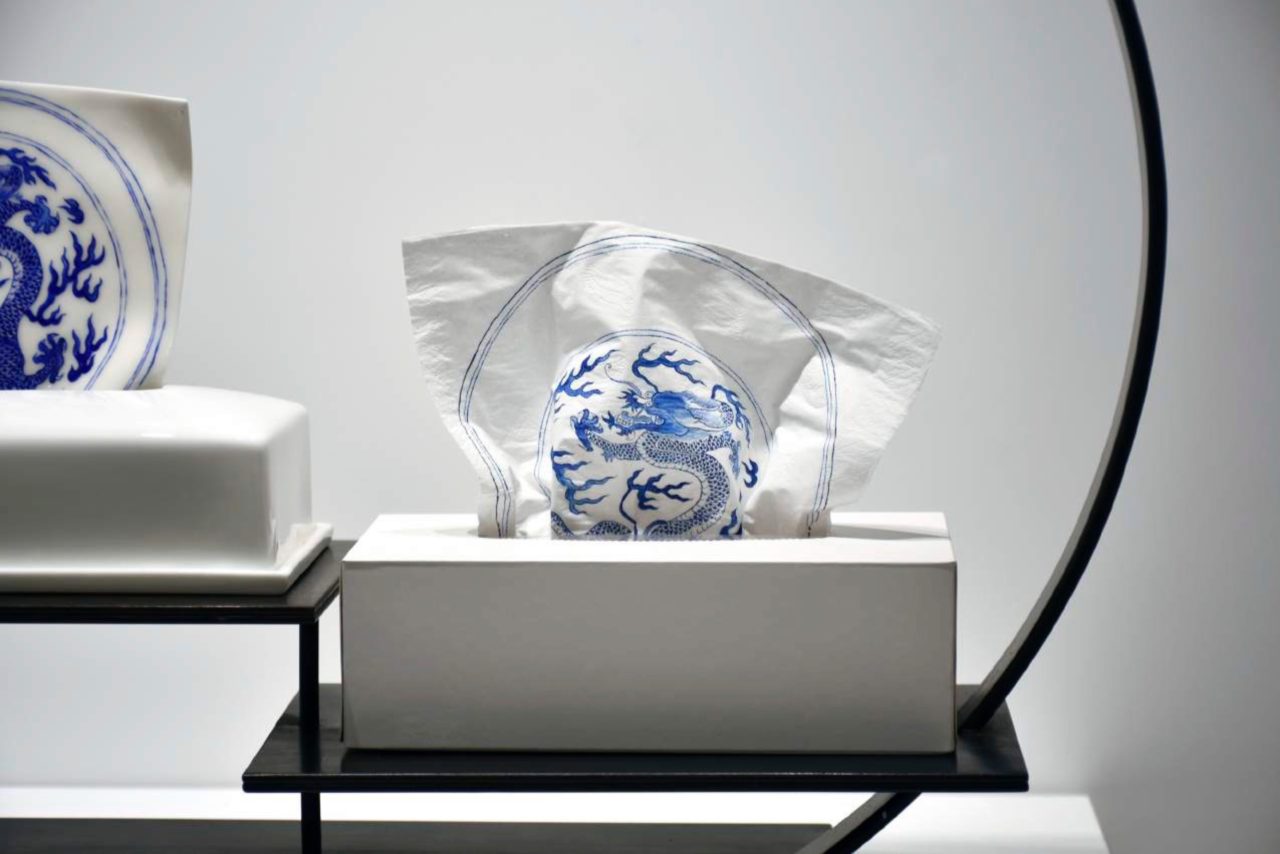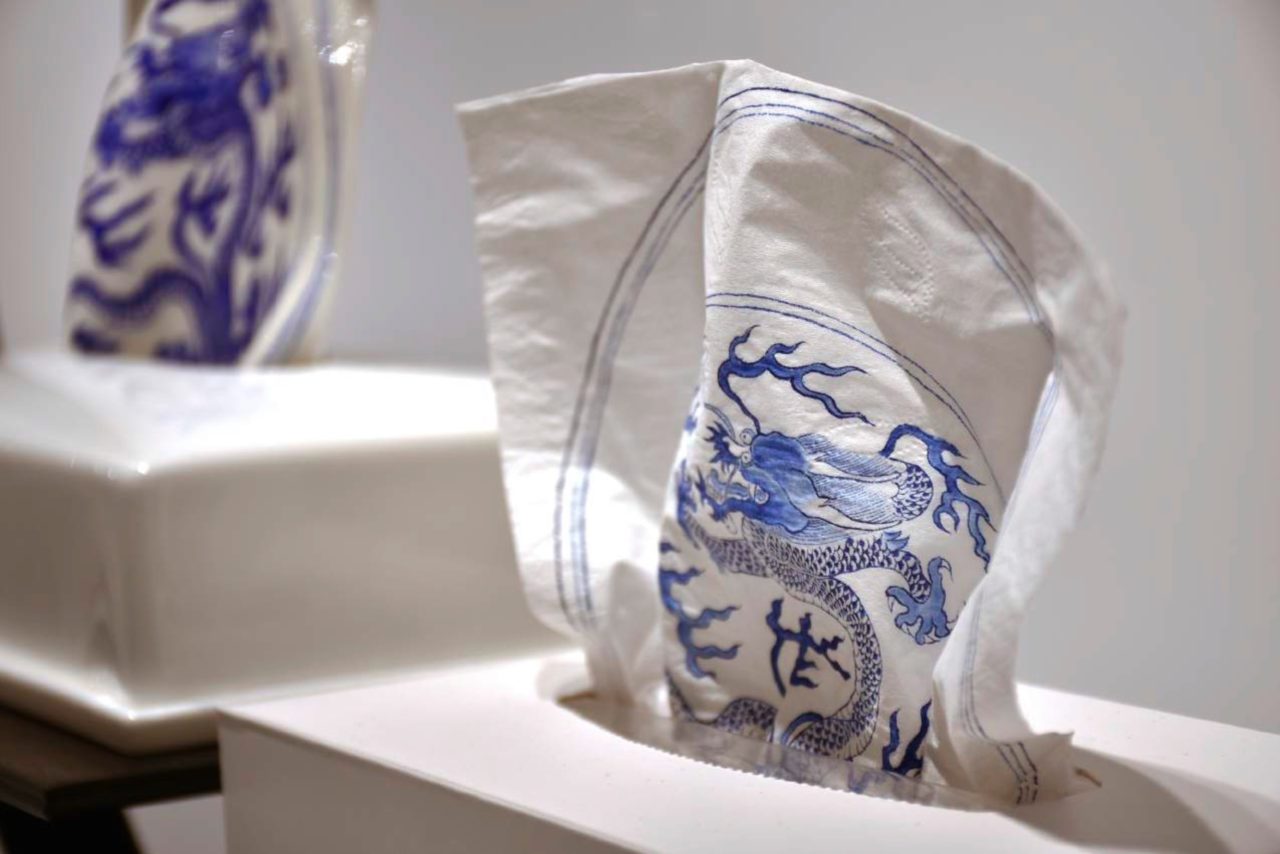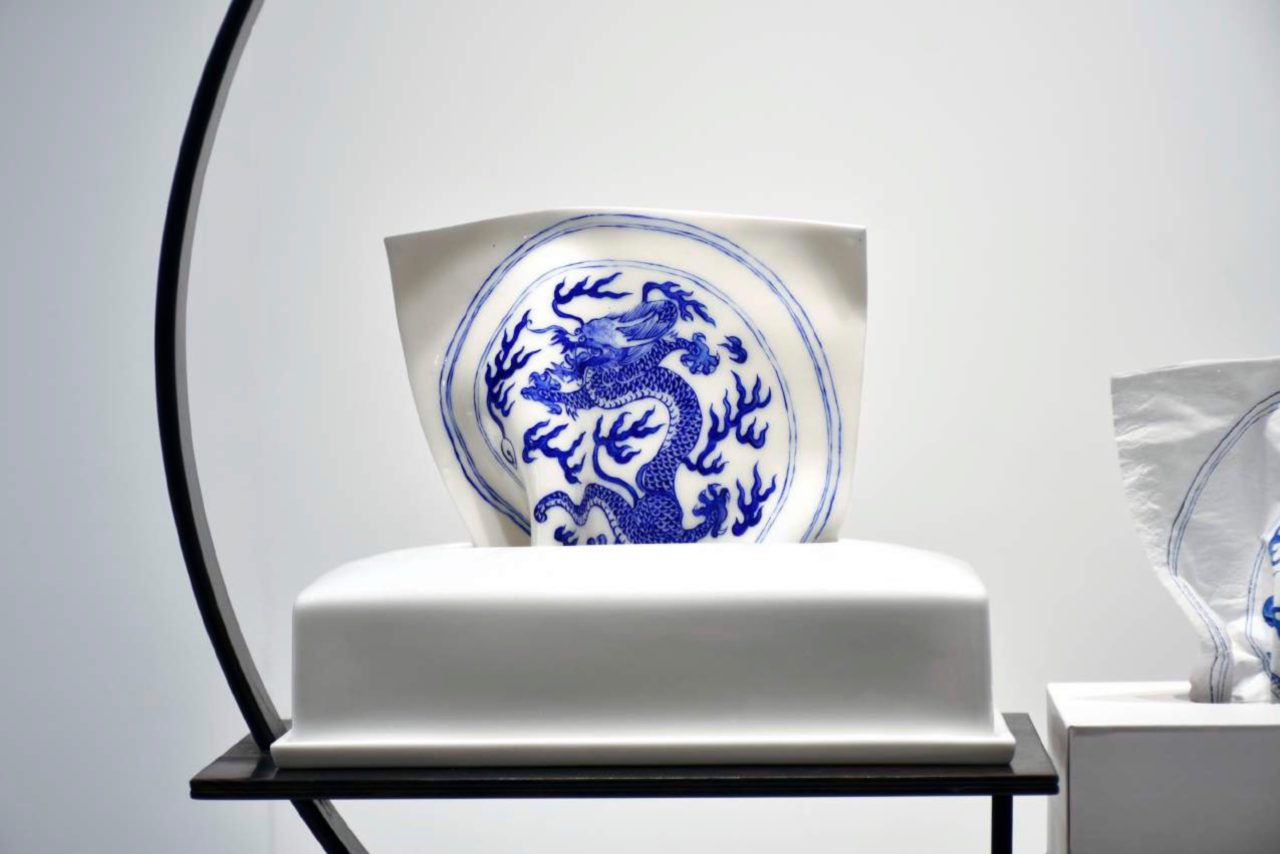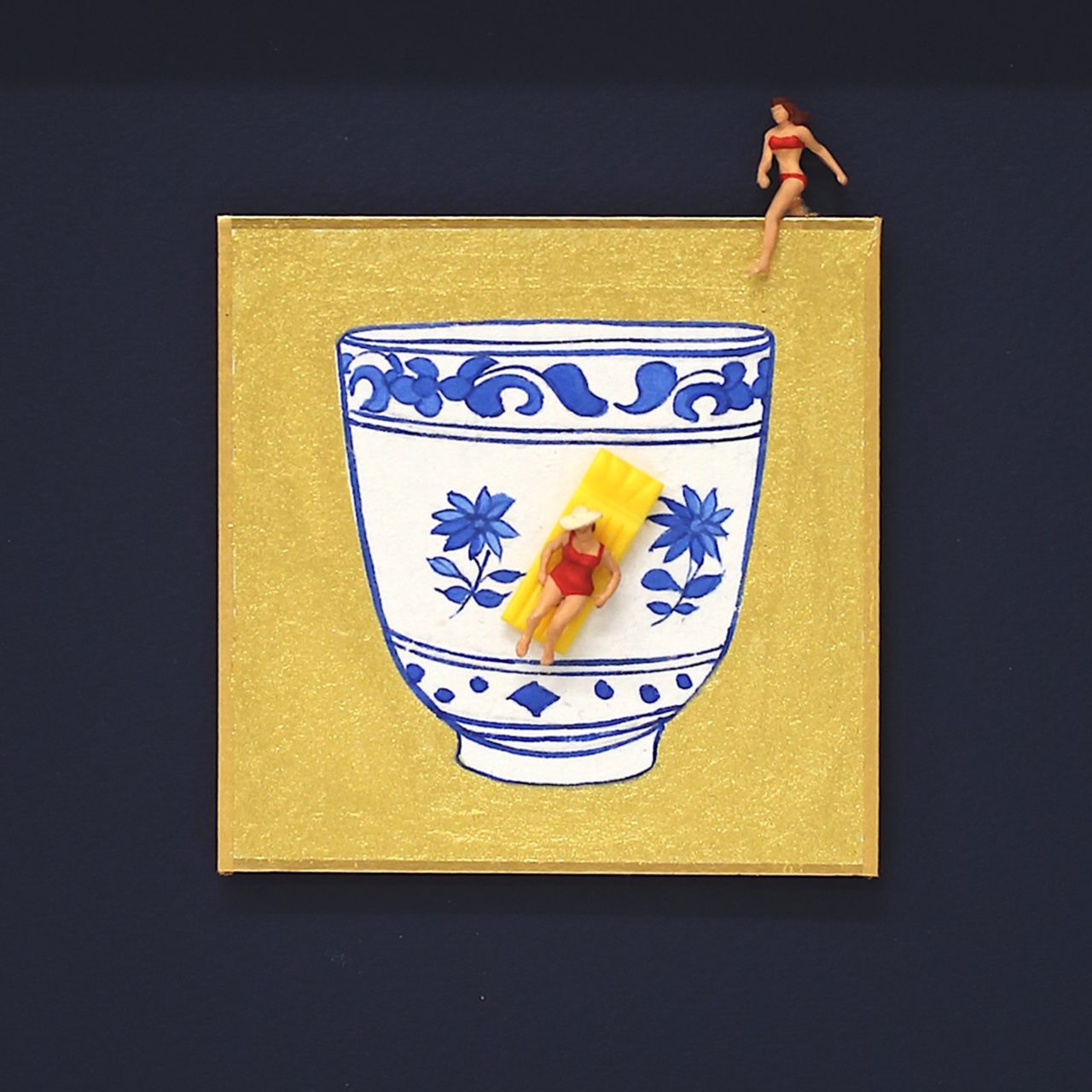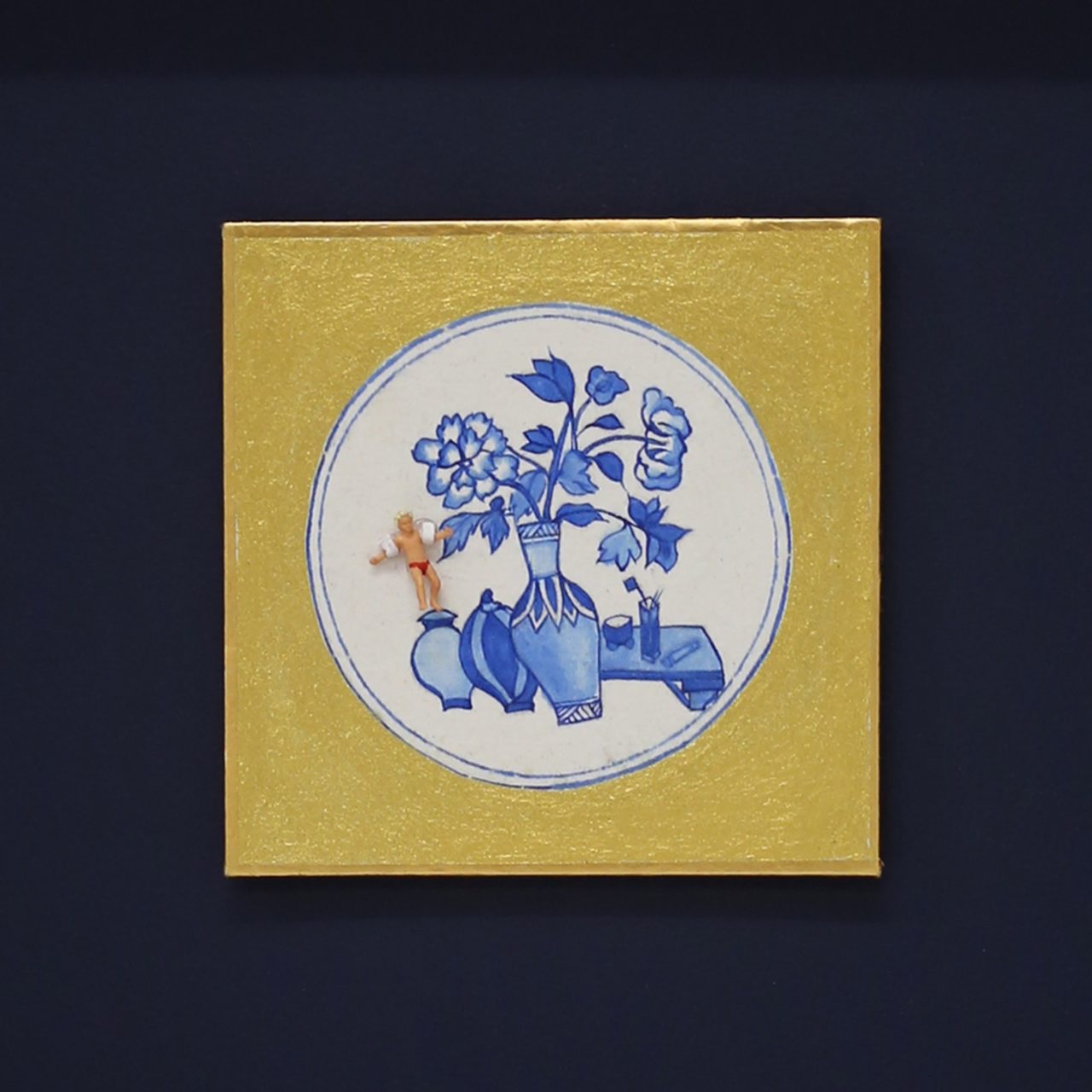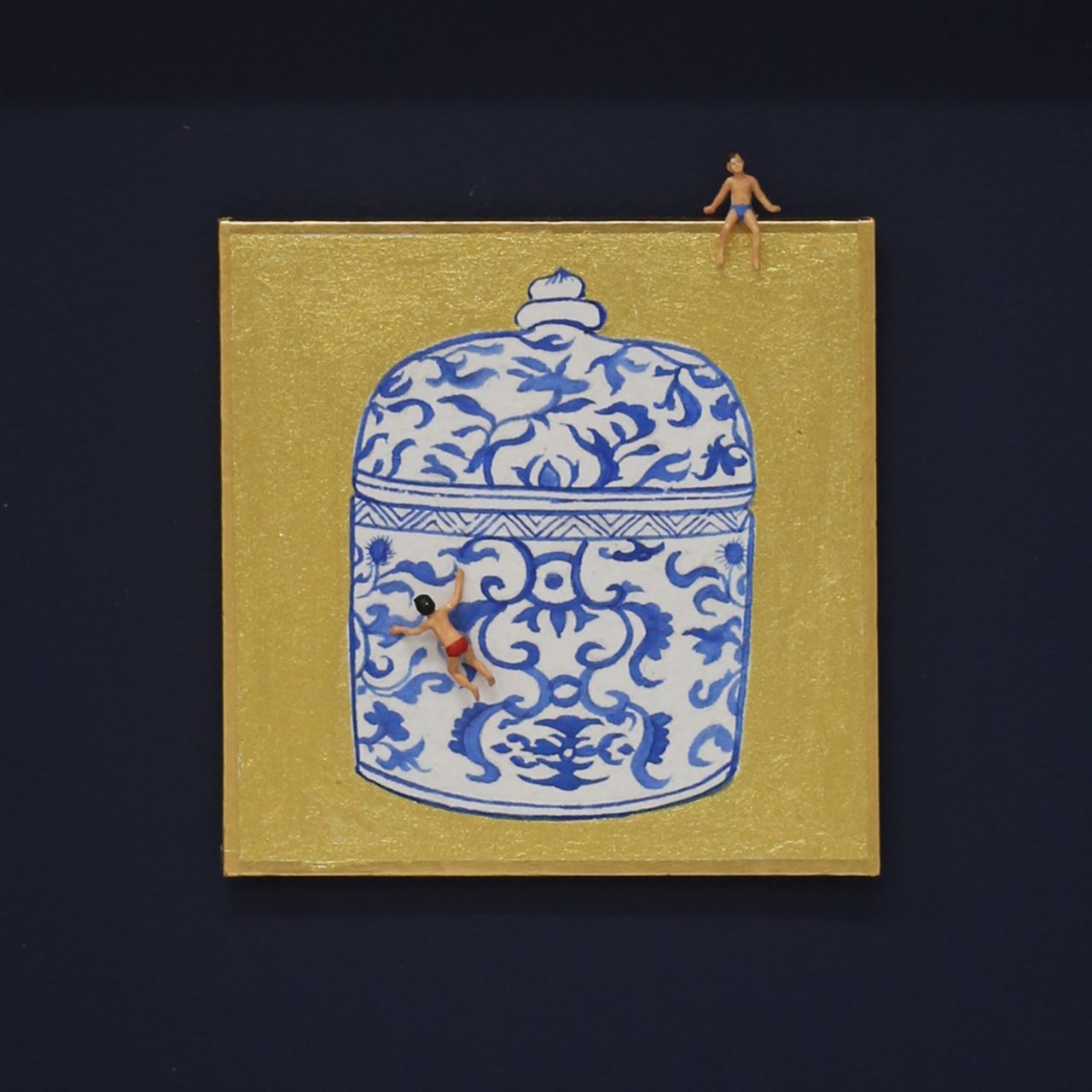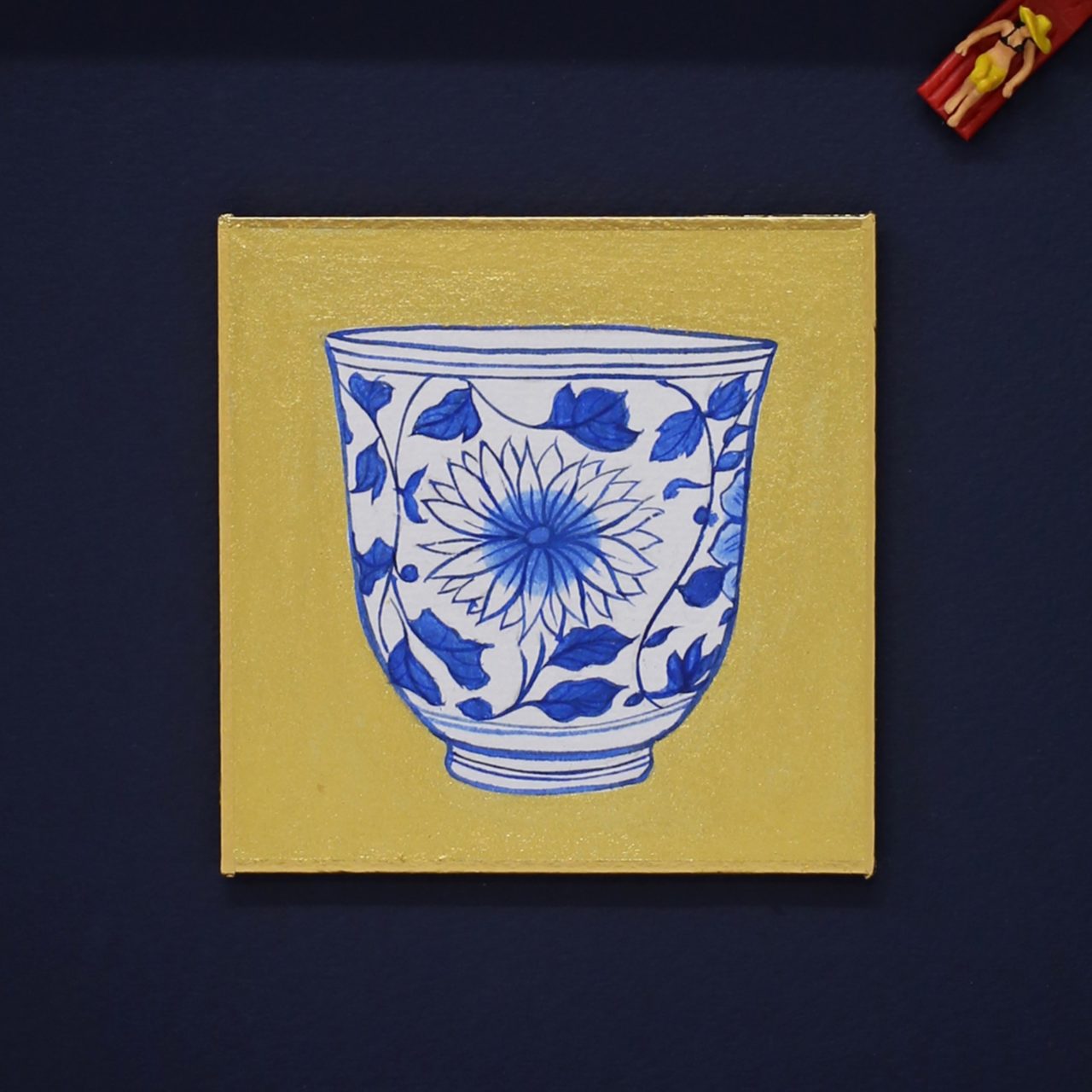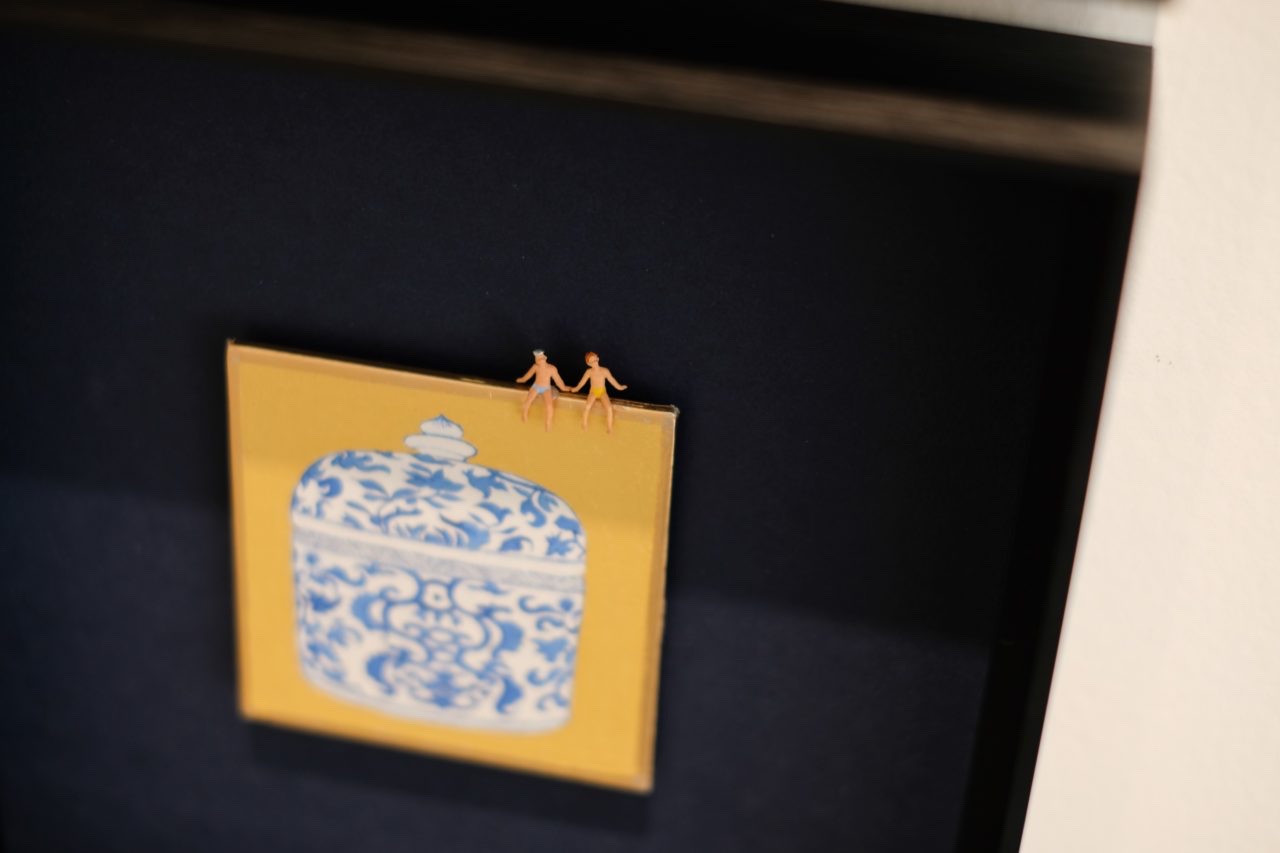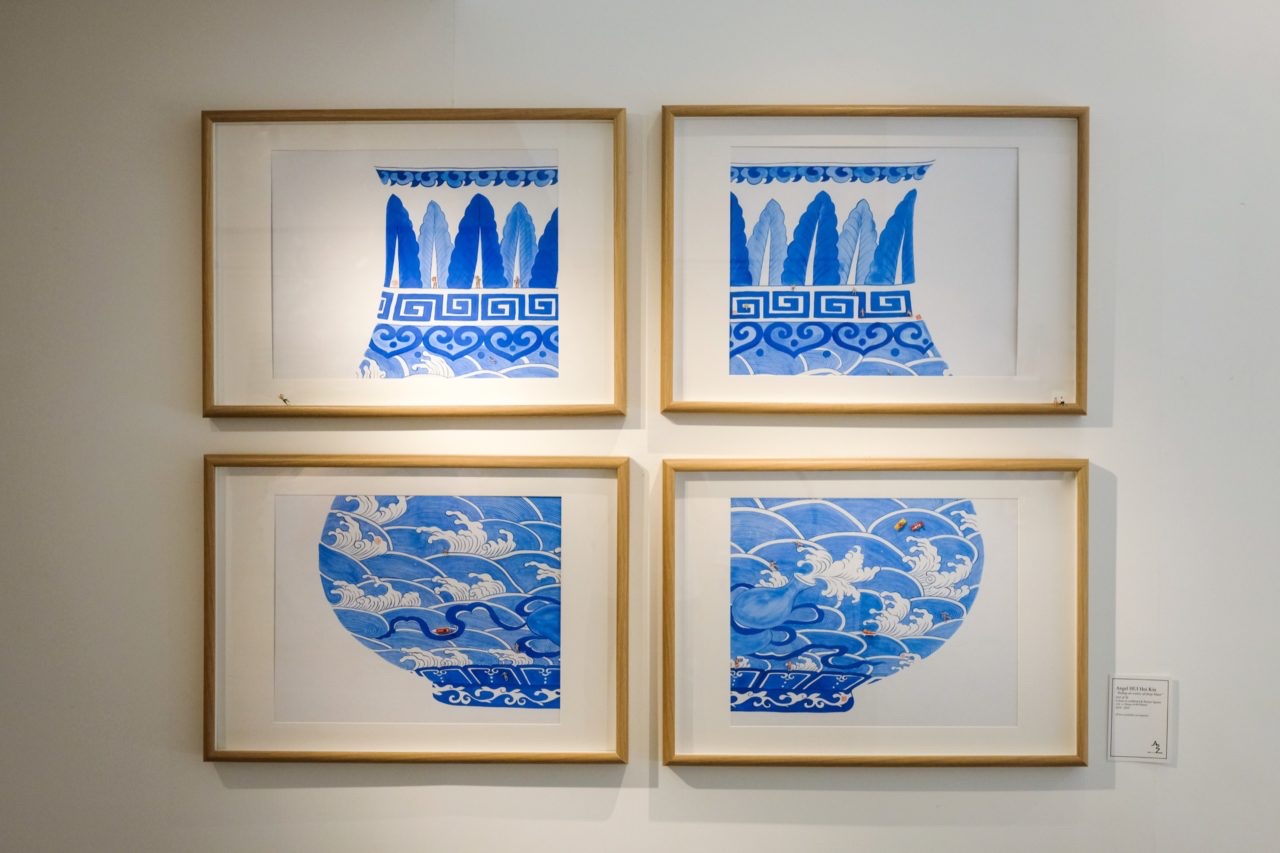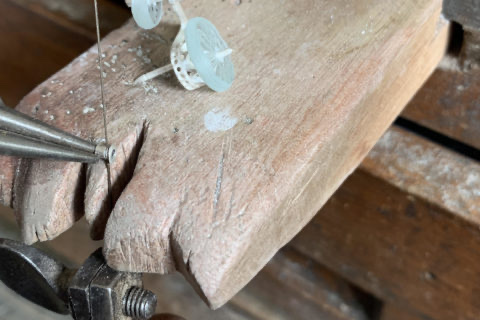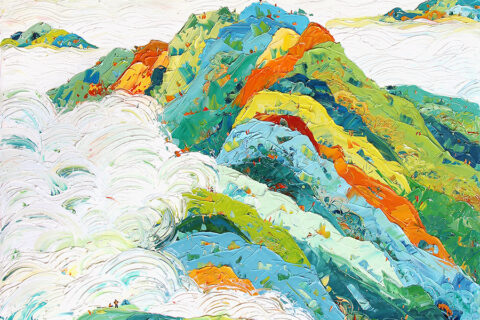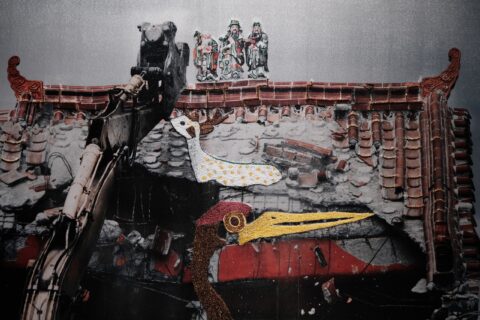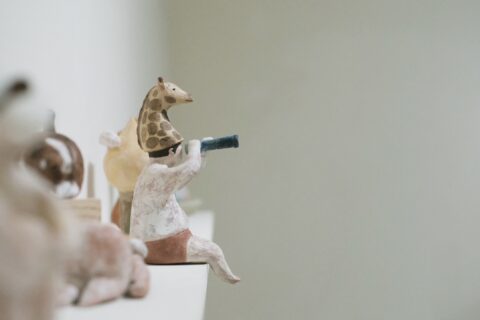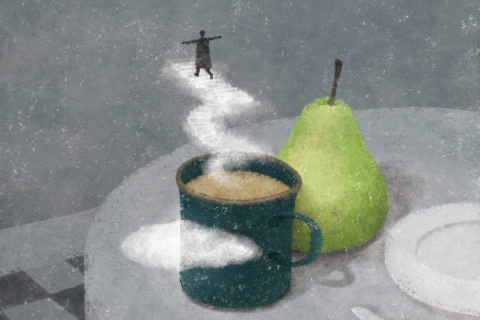自小患上了難纏的鼻敏感,天氣稍有變化,鼻子就瞬間成為缺堤的河流,紙巾盒自然地成為了生活中不可或缺的必需品。被人類用完即棄的紙巾,看似毫無價值,但是本地藝術家許開嬌(Angel Hui)透過改變紙巾的功能,從而改變它的本質,發掘我們忽略了的可能性。「紙巾是我最常接觸到的生活用品,我想透過藝術形式,改變它作為『生活用品』的本質。」Angel的大學畢業作品以手繪的方式,在100張紙巾上畫上精緻的青花瓷圖案,為生命短暫的紙巾賦予了珍貴的重量。「大青花瓷作為中國瓷器史上的代表,是古老的中國文化底蘊的象徵。在紙巾上畫上青花瓷圖案,是借助傳統中國水墨繪畫的技法讓紙巾流露出藝術感,嘗試將日常用品轉化成藝術作品,藉此反思日常與藝術的界線。」在柔軟透薄的紙巾上描繪出線條幼細、畫面生動的青花瓷圖案,相比瓷器更是不堪一擊,但它們卻有著獨特的生命力。
All my life, I have been suffering from allergic rhinitis. Just a slight change of weather would give me a bad runny nose. Naturally, I can never stay far away from my Kleenex box. These disposable tissue papers may look worthless to most, but in the eyes of the local artist Angel Hui, they represent a whole new world of possibilities. By altering its functionalities, tissue paper can acquire a different nature. “As a household item, tissue papers are present everywhere. I wish to use art to give them a different definition.” Angel’s graduation project is a hand-painted series of traditional Chinese blue-and-white porcelain pattern on 100 pieces of tissue paper. The meticulously applied brushwork gives new weight to the flimsy paper that would have otherwise lived a short lifespan. “Blue-and-white porcelain pattern is a highly representative style in Chinese art, with deep associations with the traditional Chinese culture. By drawing such traditional ink pattern on these fragile canvases, I attempt to express the artistic quality from the most mundane materials in ordinary life. This is an invitation for us to ponder on the boundary between everyday life and art.” Hui’s works are painstakingly detailed and executed, an approach that gives her works an ethereal quality when applied to her tissue paper. The medium may look more brittle than porcelain, but it is full of vitality.A
「我常常想甚麼是藝術品?甚麼是生活用品?難道被定義為生活用品的就不能成為藝術品?兩者之間的關係十分微妙、曖昧,而且充滿著矛盾。藝術圍繞著我們的生活、每個地方及每個人,或許我們沒有真正地意識到它的存在,甚至是如何影響日常生活;但是藝術就像人一樣活生生的存在著,是社會文化中重要的一部分。它不但塑造了我們的想法,也是表達情緒的其中一個方法。事實上,每個人都在以不同的方式做藝術。」把生活裡的平凡用品轉化成藝術品,賦予它們另一種形態和生命,使藝術與生活的界線逐漸模糊起來。
「在北京中央美術學院進修的日子,學會了使用不同的媒介、角度和途徑去尋找事物的真偽,經常提醒自己切勿使用單一的視點去觀看事物,必需細心觀察和小心分析。學院的教授經常提點我可以利用自己的身份來創作一些有關社會議題的藝術創作,從而表達自己的獨特看法。」藝術離不開生活本身,每次創作都是一種表態。「世界上有太多有趣的事物需要我們去發掘,每個人都有自己看待事情的角度和表達方式。藝術家必需做些從前不會做或不會這樣做的東西,才能創作出與別不同的藝術作品。」Angel說在紙巾上繪畫工筆畫充滿挑戰,毛筆中的水分要拿捏得很好,太多水份會令到圖案在紙巾上化掉;太少水份又不能在紙巾上呈現線條和色彩。「 為了創作這件作品,我仔細研究過不少的青花瓷器的圖案和瓷器的形狀。由元朝至清朝,以及近代青花瓷圖案的演變和發展。我希望可以深入理解它的歷史演變,從而認識不同朝代的美學風格,然後將這些材料和認知轉化成作品。」除了探古,Angel的《暢游青花》系列,在畫上青花瓷器的作品上大膽地加上微型的模型人物,在青花瓷器上游泳嬉水,形成有趣的對比。
“I always ponder on the question of what is defined as art? What is an everyday item? Can’t ordinary everyday item become art too? The relationship in between is very subtle, ambiguous and even controversial sometimes. Art is surrounding our lives. Perhaps we are not even aware of its existence, or how it is affecting our everyday lives. Art is, however, definitely as alive as you and me. It’s constantly shaping our culture and society, and, in turn, our thoughts. We also rely on art to express our emotions. In fact, I think everybody is in some ways creating art of their own.” Hui is clearly demonstrating a way how to give an everyday object a new state and turn it into art, successfully blurring the line between art and life.
“During my days at the China Central Academy of Fine Arts in Beijing, I learned how to use different media, perspective, and routes to explore the authenticity of certain objects. I always remind myself not to rely on a single perspective to look at one thing. We must always observe and analyze carefully. The professors often persuade us to make good use of our own personal identities to create art that can engage with societal topics, in order to express our unique point of view.” Art is a way of life. So when you make art, you are making a statement on life itself. “There are just so many interesting things in the world for us to explore. Everyone is bound to have a unique approach to things and a unique style to express themselves. Artists have a responsibility to venture into the unexplored realm to try to do something unprecedented. This is the only way to create art that is different from others’.” Hui said it was not at all easy to do ink painting on tissue paper. For instance, it is very challenging to control the right water proportion. Too much water will turn the paper into pulp; too little, it would not leave enough coloring. “To prepare for this work, I have done a lot of research about these blue-and-white porcelain patterns, as well as the shapes of the porcelain. I also studied the development of the pattern from the Yuan to the Qing Dynasty. By acquiring a profound knowledge about its historical development, I hope to grasp the aesthetic standards of different dynasties, before reflecting this knowledge through my works.” Besides the somewhat serious topic like history research, Hui also has her playful side. Her Swimming in Blue and White series features little model figures as “swimmers” on her ink paintings of blue-and-white porcelain pattern, creating a delightfully interesting contrast.
古今的元素結合體現Angel的幽默,也令作品變得「instagramable」,成為了在A2Z 畫廊聯展#8ARTISTS的主題。「現在很多人會說,在社交媒體的蓬勃發展下,我們不用花錢到世界各地,便能透過網絡世界看到不同藝術家的作品,甚至是著名的大師作品,而我的作品也是透過社交媒體得到更多人認識。對藝術家來説,社交媒體能增加作品的曝光率,從而提高知名度和認受性。但經營社交媒體所付出的心血、時間和精力也不少,對某些藝術家來說是一種很吃力的工作。對我來說,我還是喜歡親身去到美術館和畫廊觀看作品,作品的質感和力量才會完整地呈現我眼前,那種實在和真實感,永遠是社交媒體不能取代的。」這種真實感和生活用品一樣,建構了我們生活的本質。
Elements of new and old are twisted together to show Hui’s unique sense of humor, the compound also makes her works very Instagrammable. It becomes the theme of collective exhibition “#8ARTISTS” at A2Z Art Gallery. “Nowadays, people love to say how easy it is to see the world through various social media platforms, without spending a dime to travel. On the internet, one can check out artworks by different artists, even the most famous ones. My works are also gaining more recognition through social media. For artists, it can bring more exposure and, in turn, recognition. However, the efforts and time invested in it are also demanding. It is clearly a chore for some artists. To me, I still love to visit galleries and museums to see the actual works in person. That is the only way to completely feel the texture and power of the art piece. Social media can never substitute that substantial feeling when you see art with your real eyes.” Such substantiality has something in common with everyday items, they both are necessities in life.
